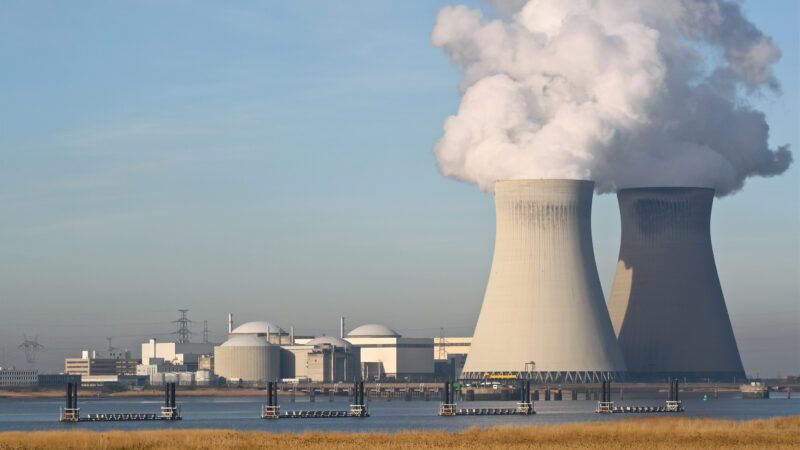Why Nuclear Energy Developers Are Suing Federal Regulators
The lawsuit will hopefully make stringent regulations for nuclear power a relic of the past.

The Nuclear Regulatory Commission (NRC)—the federal body that regulates America's nuclear power plants—has long been criticized for stunting domestic nuclear power production with stringent regulations. Nuclear energy developers and states are pushing back.
In December, Utah, Texas, and microreactor company Last Energy sued the NRC, challenging the agency's regulatory authority. Last week, underground nuclear energy developer Deep Fission joined the suit.
The lawsuit challenges the NRC's Utilization Facility Rule, which requires all nuclear power–producing entities—even those that generate only enough electricity to turn on a lightbulb—to obtain a costly operating license before powering on.
While Deep Fission "feels good about our ability to be regulated under the current regime," the company is concerned "about the impact on the world if nuclear is unable to move forward faster – to meet the current anticipated energy demand," Liz Muller, co-founder and CEO of Deep Fission, tells Reason. "We plan to meet the highest nuclear safety standards, and we believe that it can be done with a streamlined and more modern regulatory process that takes into account the small size and inherent safety of our reactors."
The NRC's archaic, one-size-fits-all regulations have added undue costs and delays to the nuclear energy industry for no benefit to public health or safety. Test reactors on college campuses, which are recognized by the NRC to present "a lower potential radiological risk to the environment and the public," must comply with the Utilization Facility Rule. As a result, they have to pay an annual licensing fee of $124,400 per reactor. These include reactors at the University of Utah (100 kilowatts) and Texas A&M University, whose two reactors produce 1 megawatt (MW) and 5 watts of electricity (that amount isn't enough to power a typical LED lightbulb). Louisiana does not have a test reactor at any of its universities, but has charted a pathway toward developing small modular reactors, and joined the lawsuit in April.
Deep Fission is also negatively impacted by the rule. Using a 30-inch borehole, the company places its small modular reactor (which produces 15 MW of thermal power or 5 MW of electric power) one mile underground. At that depth, reactors are positioned well below the water table and "encased in billions of tons of stable bedrock," which means that they "pose little proliferation or public health risk," says Muller. Deep Fission argues that this "may eliminate the need for costly concrete and steel surface containment buildings," allowing its reactors to produce more affordable electricity.
However, before it can get up and running with this technology, Deep Fission will have to pay a steep fee—more than $5 million for larger reactors—to obtain an operating license. Since no small modular reactors are in operation yet (due in large part to stringent regulations), the NRC has not assigned an annual operating fee for these reactors.
Last Energy, one of the original plaintiffs of the lawsuit, has had to focus on developing its business overseas because of the utilization rule and others like it. Despite being based in Washington, D.C., the company has public plans for only one project on U.S. soil, which it announced in February.
The Utilization Facility Rule is just one of the many onerous regulations that have held back American nuclear power development. The increased state and private sector opposition to the regulation could hopefully make it a relic of the past.


Show Comments (45)